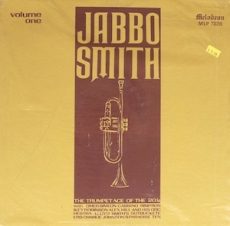
Daily Dose Of Jazz…
Walter Bishop Sr. was born on January 9, 1905 in Jamaica but emigrated to the United States prior to beginning his professional career. He settled with his family in the Sugar Hill district of the Harlem neighborhood of Upper Manhattan.
He played drums on recordings by pianist Alex Hill and trumpeter Jabbo Smith during the 1920s and 1930s. His song Swing, Brother, Swing was recorded by Billie Holiday with Count Basie, among other performers.
Other songs written by Bishop include Jack, You’re Dead, which was a #1 R&B hit in 1947 as recorded by Louis Jordan, The Stuff is Here (and It’s Mellow), and Bop! Goes My Heart, which was recorded by Frank Sinatra.
His song My Baby Likes to Bebop was recorded by Ella Fitzgerald, and by Nat “King” Cole with Johnny Mercer, and his calypso “Sex is a Misdemeanor” was recorded by Vanessa Rubin.
Drummer, composer and songwriter Walter Bishop Sr., the father of jazz pianist Walter Bishop Jr., transitioned one day before his 80th birthday on January 8, 1984.
More Posts: composer,drums,history,instrumental,jazz,music,songwriter
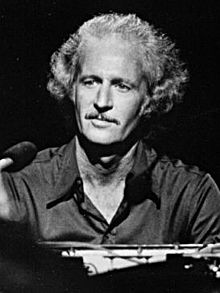
Three Wishes
When Nica broached the subject of three wishes with Mose Allison he had but one reply:
- “If that ever happened to me, the first would be that every individual would contain his own destructiveness. And if this wish was granted, I wouldn’t need the others.”
*Excerpt from Three Wishes: An Intimate Look at Jazz Greats ~ Compiled and Photographed by Pannonica de Koenigswarter
More Posts: baroness,history,instrumental,jazz,music,pannonica,piano,songwriter,three,vocal,wishes
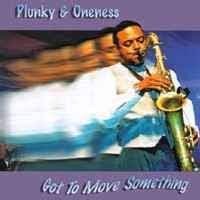
Daily Dose Of Jazz…
James “Plunky” Branch was born on July 20, 1947 in Richmond, Virginia and educated in the city’s segregated schools. He then attended Columbia University in New York City, but by 1971 he had moved to San Francisco, California. It was here that he formed Juju, a musical group that combined rhythm and blues, jazz, soul, and African musical influences.
He founded the band Plunky & Oneness, which began as Juju in 1971 which he renamed twice, Oneness of Juju and Plunky & the Oneness of Juju, before it was given its current name in 1988. One of Plunky & Oneness’ songs, Every Way But Loose, is featured on the video game Grand Theft Auto: Vice City Stories, playing on fictional radio station Paradise FM.
Branch is the president and founder of the independent record label N.A.M.E. Brand Records, through which he has released 25 albums. As a studio musician Plunky has worked for The Cosby Show and has appeared on several avant-garde jazz albums.
As an educator he has been Director of the Jazz Ensemble at Virginia Union University as well as an instructor of Afro-American Music History at Virginia Commonwealth University.
He has been the recipient of two NEA Jazz Fellowships and was appointed to the Governor’s Task Force for the Promotion of the Arts in Virginia. In 1999 he was recognized by Richmond Magazine as Musician of the Year for 1999. J. Plunky Branch continues to perform, record, compose and produce.
More Posts: bandleader,educator,history,instrumental,jazz,music,producer,saxophone,songwriter
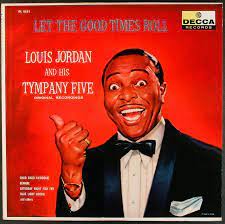
Daily Dose Of Jazz…
Louis Thomas Jordan was born on July 8, 1908 in Brinkley, Arkansas. His father, James Aaron Jordan, was a music teacher and bandleader for the Brinkley Brass Band and the Rabbit Foot Minstrels. His mother died when he was young and his grandmother Maggie Jordan and his aunt Lizzie Reid raised him. At an early age he studied clarinet and saxophone with his father and by his teens he was a member of the Rabbit Foot Minstrels and was playing professionally in the late 1920s.
In the early Thirties he was performing in Philadelphia, Pennsylvania and New York City with Charlie Gaines. He recorded with Clarence Williams and was a brief member of the Stuff Smith Orchestra. Joining the Chick Webb Orchestra he sang and played alto saxophone, however, in 1938 he started a band that recorded a year later as the Tympany Five.
In 1942, Jordan and his band moved to Los Angeles, California where he began making soundies, the precursors of music video. He appeared on many Jubilee radio shows and a series of programs for the Armed Forces Radio for distribution to American troops overseas. Though a hernia condition kept him out of the war his recordings made him very popular with both black and white soldiers.
During the 1940s Jordan and the band became popular with such hits as Choo Choo Ch’Boogie, Knock Me a Kiss, Is You Is or Is You Ain’t My Baby, and Five Guys Named Moe. Within a year of his breakthrough, the Tympany Five’s appearance fee rose from $350 to $2,000 per night. But the breadth of Jordan’s success and the size of his combo had larger implications for the music industry. His raucous recordings were notable for the use of fantastical narrative, best exemplified on Saturday Night Fish Fry, a two-part 1950 hit that was split across both sides of a 78-rpm record. It was one of the first popular songs to use the word “rocking” in the chorus and to feature a distorted electric guitar.
From July 1946 through May 1947, Jordan had five consecutive number one songs, holding the top slot for 44 consecutive weeks. In 1961, the IRS filed an income tax lien against Jordan and he had to sell property well below its value to pay off his debts. Musician Ike Turner stepped in and contacted and convinced the president of Jordan’s booking agency in Chicago, Illinois. to send Jordan a check for $20,000. He was unaware of this deed.
Over his career he charted dozens of singles, eighteen #1 and fifty-four in the Top Ten. He ranked fifth among the most successful musicians of the period 1942~1995, however, many he did not own the rights to, hence no financial benefit. Saxophonist, multi~instrumentalist, songwriter and bandleader Louis Jordan suffered a heart attack and transitioned on February 4, 1975, in Los Angeles.
More Posts: bandleader,history,instrumental,jazz,music,saxophone,songwriter
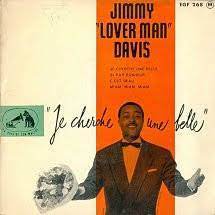
Daily Dose Of Jazz…
James Edward Davis was born in 1915 in Madison, Georgia. He and his family moved to Gary, Illinois, and then to Englewood, New Jersey, where he completed his high school education. Being musically gifted, he was accepted into the Juilliard School in New York City to study piano and composition, his fees being paid by a benefactress.
In the late 1930s he wrote the song Lover Man (Oh, Where Can You Be?) with Ram Ramirez but could not initially place it, until he offered it to Billie Holiday in 1942. However, due to the 1942–44 musicians’ strike Holiday didn’t record the song until 1944. Although at first it was only a minor hit, it soon achieved widespread success and went on to become a jazz standard.
During the early 1940s Davis struggled to make a living as a songwriter and supplemented his meagre royalties by giving piano lessons. Drafted in 1942, but as a member of the NAACP, refused enlistment into the segregated regiment, was ultimately imprisoned for thirteen days, then inducted into the army, serving three and a half years. By 1945, as a warrant officer, he was sent to France for six months, and learned the language. Back home, upon his discharge he left for Hollywood, joined the Actors’ Laboratory Theatre, however his acting career only offered stereotypical racial roles. At the end of 1947 he emigrated to France.
Warmly welcomed in Paris, in part, due to the fame of the song Lover Man, he styled himself Jimmy “Lover Man” Davis and entered a highly creative period, writing a number of songs and placing them with major French performers, such as Yves Montand, Maurice Chevalier, and Joséphine Baker. His songwriting royalties were still insufficient to live on, so he began singing his own songs in solo performances, touring through France, Italy, Holland, Spain, Switzerland and other countries.
Composer, songwriter, vocalist, pianist and actor Jimmy Davis, whose birth and death dates are currently unknown, and who was a close friend of Langston Hughes, transitioned in Paris, France in 1997. His biography, In Search of Jimmy ‘Lover Man’ Davis, was written by Professor François Grosjean.
More Posts: composer,history,instrumental,jazz,music,piano,songwriter,vocal





